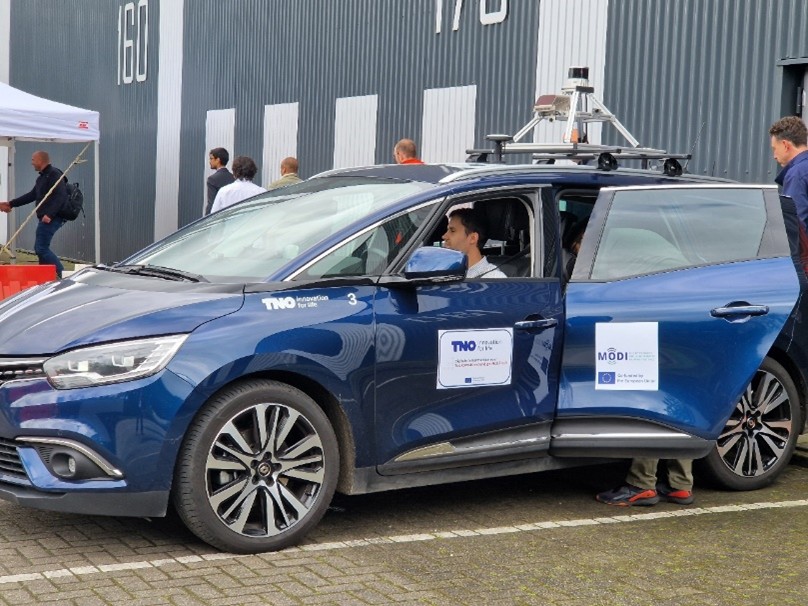2025 marks a key milestone for the MODI project as it enters its second half! Let’s explore the project’s latest achievements and the road ahead. Together these advancements illustrate the MODI project’s commitment to defining, developing, and benefitting the broader cooperative and connected mobility landscape.
Use Case Netherlands: Port operation
The first implementation of MODI’s interface for coordinating automated vehicles was presented in May 2024, at the premises of the applied science and technology organisation TNO on its Automotive Campus in Helmond. During the event, one of TNO’s CCAM test vehicles (Figure 1) was successfully guided through a challenging route involving complex manoeuvres, such as parking and reverse driving.
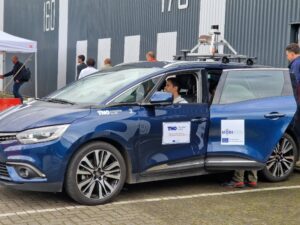
In December 2024, the third co-creation session for the Dutch use case was held in APM’s Headquarters in The Hague. APM Terminals, part of A.P. Moller-Maersk, focuses on enhancing operations through new technologies to improve connectivity and communication standards. MODI representatives, along with a wide variety of stakeholders, discussed the integration of CCAM technology into logistics operations. The meeting primarily focused on business models and stakeholder involvement to support the new tasks emerging when operating automated vehicles.

Use Case Germany: Motorway to Harbour
The German use case achieved a significant milestone in December 2023 with its reference drive, completing a strategically important project phase. Progress was made in identifying where Cooperative-Intelligent Transport System (C-ITS) technology can most effectively protect Vulnerable Road Users (VRUs) and optimise traffic flow, and in adapting vehicles for these scenarios. This initiative is collaborative among players, including New Mobility Solutions Hamburg, Gruber Logistics, the Research Institute in the German Federal Ministry of Transport BASt, Volvo and DAF transport companies, and the City of Hamburg.
The key point of this phase was planned in great detail, culminating with the identification of three sub-use cases. These were identified through a Co-Creation Arena involving all MODI partners, who agreed to focus on right-turning manoeuvres and an intersection in Harbour City, an area with high pedestrian and cyclist activity and significant touristic value. The three sub-use cases are:
- Port-Road Optimisation: As the port grows, the challenge is improving traffic flow without expanding infrastructure.
- VRU Protection: As active mobility becomes increasingly popular, mitigating conflicts between heavy goods vehicles and vulnerable road users, particularly cyclists, is essential.
- Motorway Transition: Transitioning from motorways to urban and port roads is often challenging for drivers and future autonomous vehicles. This use case focuses on testing and evaluating smoother merging methods.
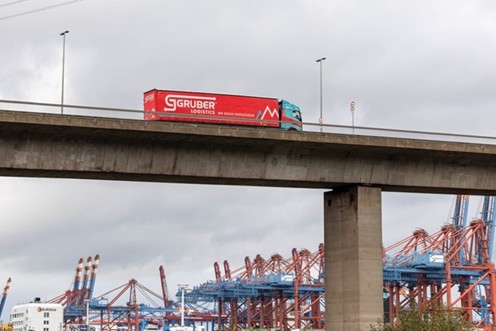
The tendering process for this initiative is now complete, and the next step will be to implement the technology at the selected road intersection. As partners prepare for the testing and data collection phase in Q2 2025, vehicle providers will conduct real-world tests with their vehicles in the coming months. These tests will be showcased in September 2025 during the demo event in Hamburg, where attendees can witness the initial results firsthand.
Use Case Sweden: Hub-to-hub
The Swedish use case will demonstrate using L4 vehicles from a logistics centre. The vehicles are supplied by Einride and Volvo, two Swedish transport companies. Specifically, Einride will showcase how charging, loading, unloading, and access control can be automated for elevated efficiency within Swedish logistics (Figure 4).
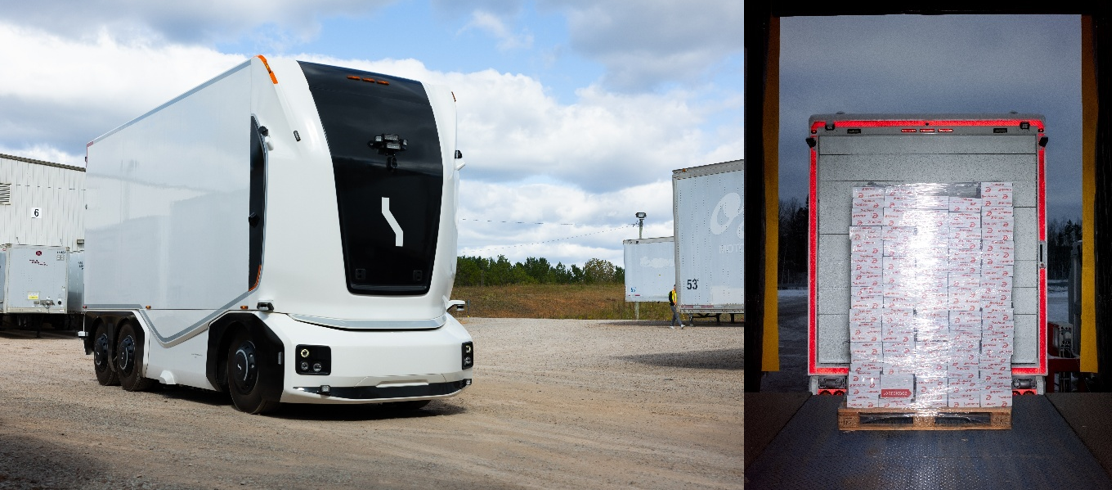
In April 2025, the focus of this use case will be to demonstrate how loading and unloading of autonomous heavy-duty vehicles can be made, with the help of a remote operator. The demonstration will feature Einride vehicles, supported by STILL, a company focusing on intralogistics and autonomous forklifts. This will be followed, in May 2025, by two other demonstrations: one on automatic charging, supported by Rocsys, a hands-free charging solution for electric autonomous vehicles company, and one on automatic gate access with Q-Free, a supplier of Tolling, Traffic Management, C-ITS and Connected Vehicle technologies. For this last activity, the C-ITS messages will support access control in confined areas, boosting chances of a faster rollout of automated vehicles and C-ITS solutions in Europe.
Use Case Norway: Border to port
The Norwegian use case focuses on an automated vehicle drive from Sweden on the E6 motorway, crossing the border and customs using a digital toll up to the ASKO central storage, where the cargo is shifted to another vehicle and continues its drive to the port of Moss. The vehicle tackles challenging traffic situations with vehicle-to-everything (V2X) and perception technologies. Einride leads the drive until reaching the customs, where Volvo takes over for the journey’s second half.
In early January 2025, the Norwegian use case completed its first set of on-site testing using an electric Volvo truck for the V2X services to be demonstrated in June 2025.
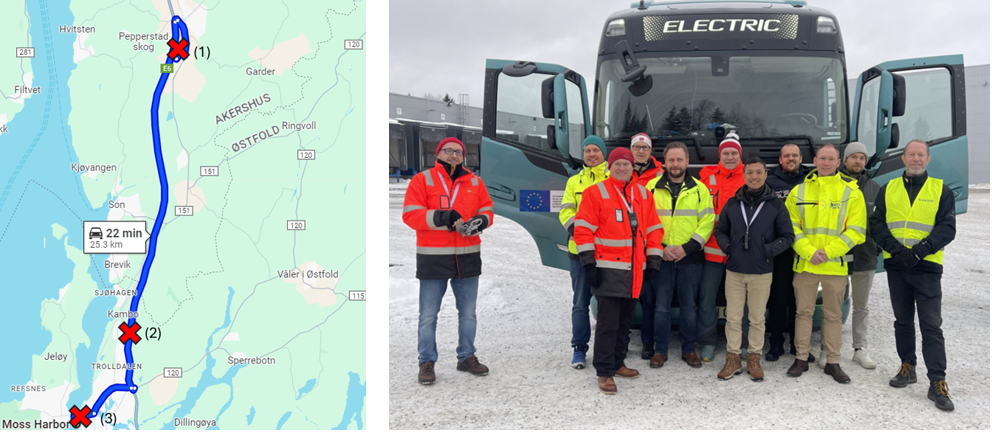
Stay tuned for further updates on our ongoing initiatives as the MODI consortium continues to expand global partnerships and drive innovation in the CCAM arena. For more information about the project and its developments, please join our Newsletter, and keep following MODI on LinkedIn and X (Twitter).

